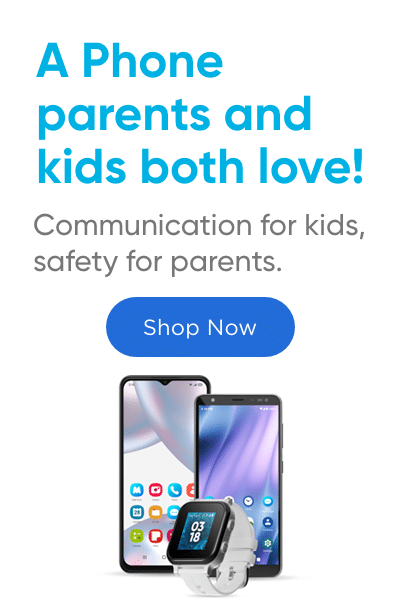How to Help Kids Be Wise With Tech
APR 07, 2021
How to Help Kids Be Wise With Tech
The Wrong Approach
Young people may well be the most underestimated human beings on the planet. Yes, we’re all familiar with the stereotypical images of teenagers, hunched over their phones: their zombified, pale-skinned faces awash in sickly blue light. We’ve read the screaming headlines about this “lost” generation of kids who have become anti-social, cyber-bullying, ever-gaming, porn-troubled tech addicts. As their parents, we both love and despise the tech that we place in their hands. We love the safety element of being just a phone call away from that beloved child and (ironically) we despise the distance it can create in our relationship with them. The tug-of-war over how to help kids be wise with tech is an exhausting battle that most parents deal with on a daily basis.
And so, even in the very act of placing these devices into the eager hands of our children, the seeds of mistrust can begin to germinate. Hop on any crowded tech parenting Facebook page, and you’ll find hundreds of entries from parents up in arms about the latest horrible thing they’ve caught their “sneaky” child doing online. Consume enough of this online parental conversation, and you’ll come to a seemingly inescapable conclusion: kids are weak and cannot be trusted with tech. Period. End of story.
This kind of stance is by far the loudest voice in parenting advice circles right now. Its central message? Your job as a parent is to know every hidden feature of every available app and filter, block, and corral your child at every turn until they finally reach adulthood and are out from under your jurisdiction. Founded upon a position of mistrust and fear, it’s not a very happy place to parent from. And what about this idea that young people are weak and untrustworthy?
I don’t buy it in the slightest.
A Different Approach
Stanford psychology expert Nir Eyal wrote recently about his 5-year-old daughter’s relentless pursuit of “iPad time.” After an exasperating period of struggle, he and his wife elected to take a different approach. They explained to their daughter, in simple terms, the preciousness of time. That more time on the iPad would leave less time for playing, swimming, and time with Mom and Dad. They explained how the “very smart people” who design those iPad apps design them in ways that make her want to play and watch all day long. After allowing this to sink in, they asked her how much screen time she thought would be good for her each day. To Eyal’s delighted surprise, she contritely asked for “two shows” per day… about 45 minutes of screen time. “Armed with the logic behind why limiting screen time was important” this 5-year-old crafted her own time limit and proceeded to set her own kitchen timer; willingly shutting things down when the timer went off. This eye-opening anecdote should stop us parents in our tracks. If a 5-year-old can be taught how to craft and self-monitor her own screen rules, is there any limit to the discipline that kids might be capable of?
Add to this the recent campaign by the explosively popular company Gabb. Gabb, providing the much longed-for return to call and text only phones for kids, has harnessed the power and strength of young people in their appealing #livebeyondthescreen campaign; a message less focused on screen restriction and more on the amazing things young people are doing beyond the screen. Central to the campaign’s message, young “ambassadors“—kids with astonishing talent in everything from singing to BMX biking. The clear message? Kids can live well and balanced lives alongside tech.
Now, please don’t misread me here. I have researched every corner of the Internet on the fallout between teens and tech. The news headlines scream crisis. The data supports it. Parental observations confirm it. Things are rough right now in the ways many kids relate to tech. Issues with online bullying, pornography addiction, body image trauma, and good old fashioned time wasting… it’s all very real. But the idea that our children are hapless pieces of flotsam in the tidal wave of today’s powerful technologies does not sit well with me, because I have seen otherwise.
I’ve seen with my own eyes a new generation of kids with nearly limitless capacity to choose well with tech and wield it for good. They are out there. Contrary to popular opinion, kids are not destined to be stupefied by gaming, they are not foreordained to porn addiction, and they are certainly not helpless in the face of it all. And as parents, neither are we. We can know how to help kids be wise with tech.
How to Help Kids Be Wise with Tech
Be conservative and steady in the granting of tech privileges.
I’ve never met a parent who wishes they’d granted that fully-loaded smartphone to their child at a younger age. We don’t hand it over “because every other kid has one.” We don’t gift it just for the chance to see the elation on their faces or to be the cool parent. We require our kid to demonstrate wisdom and self-control with what screen access they do have. And when it feels right to grant that first phone? Begin with the text/call only Gabb Phone™—the perfect first phone for kids.
Strengthen their internal filter.
With much parenting focus placed upon digital filters and heavy parental monitoring, I cannot overemphasize the power of strengthening the child’s internal filter! This down-in-the-heart desire to be wise with tech for one’s own happiness is critical! We do this by presenting our children with solid information on the pitfalls of heavy social media use, the dangers of porn, the reality of online predators, and other online realities. We have regular conversations with them about these topics, asking their opinions, and encouraging them to voice them! The aim? A child with owned opinions on how they want to live with technology! A child who walks out the door (away from parental oversight) and still chooses well.
Engage them in the crafting of their own tech plan.
It’s time to freshen up the traditional approach of the old school phone contract: that lengthy list of rules written by the parent and signed by the child. A child who’s been taught about the perils and blessings of today’s technology is well-equipped to help put together a tech use plan that they can embrace. Consider the free My Tech Plan & Parent Guide download that has been powerful in my own home.
Nurture their “life vision.”
I have long been fascinated by teens who are doing well with screens. I’ve met them, talked with them, and observed them. Why do they do it? Why do they choose to live well with screens when it seems so many of their peers are swallowed by it? In my casual conversations with them, there seems to be a common thread: life vision. They have dreams. Dreams about their future life, their future careers, and their future families. They see in their mind’s eye a vision, if you will, for what they want and they seem to have made one crucial connection: that their behavior with tech today will work to the helping or harming of those dreams. For this reason, we as parents would do well to nurture this vision in our children. What are their hopes? What do they want tomorrow to look like? Who do they hope to become? Show me a child who has within them this kind of hope and vision for their future life, and I’ll show you a child who will begin making dramatically different decisions with their screen use.
In short, there is hope. The above ideas, some unconventional in nature, have proven powerful in the lives of real kids and real families. We must not buy in to the idea that young people are destined for destruction at the hands of “big tech.” Nurture within yourself the belief that the disarmingly ordinary-looking young person that walks the hallways of your home has within them a powerful and perhaps untapped capacity to choose well and wield today’s technologies for good. As we are deliberate and fearless in learning how to help kids be wise with tech, we can nurture within our children a powerful internal filter, one that our children can own and take with them into an unfiltered world.












Success!
Your comment has been submitted for review! We will notify you when it has been approved and posted!
Thank you!